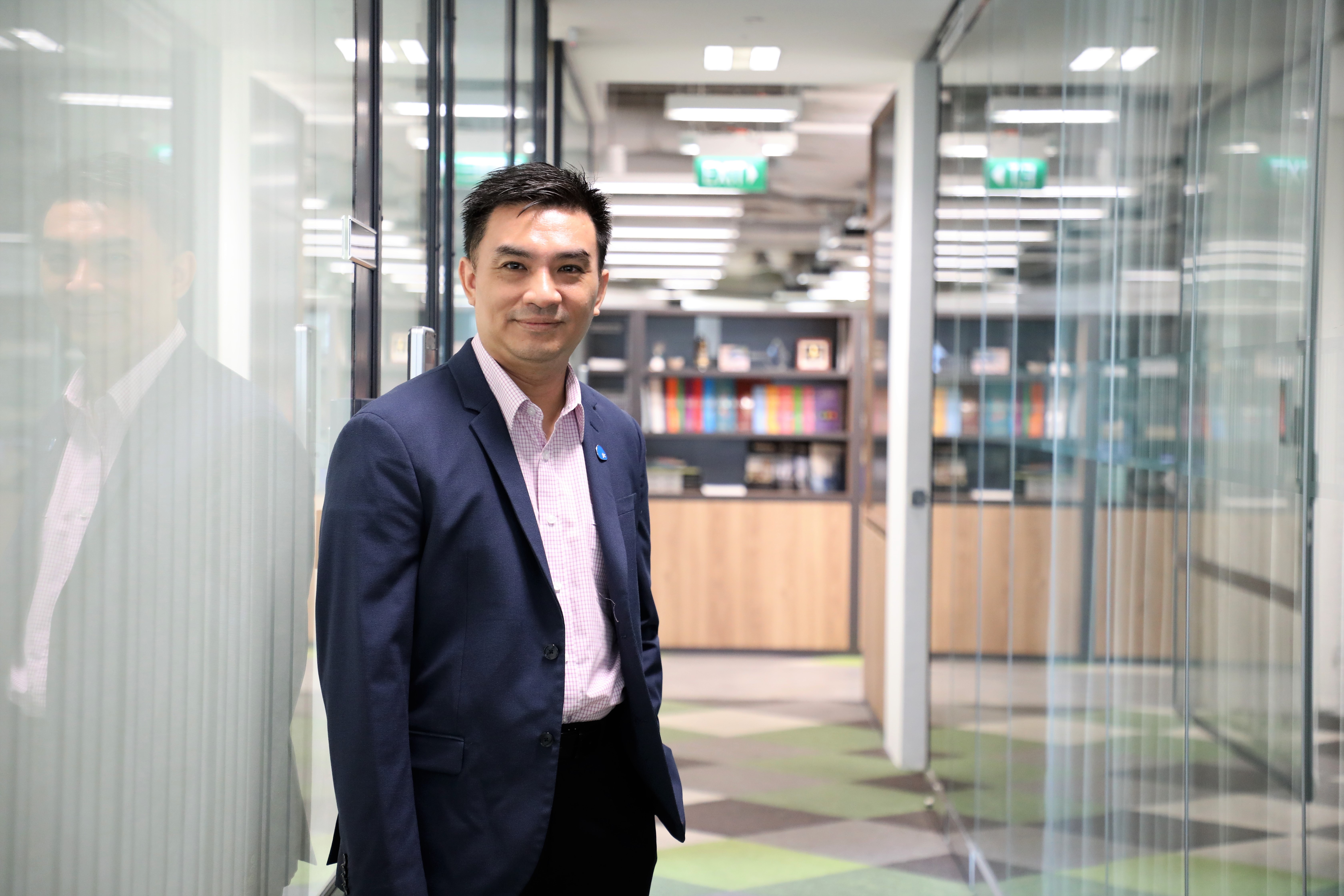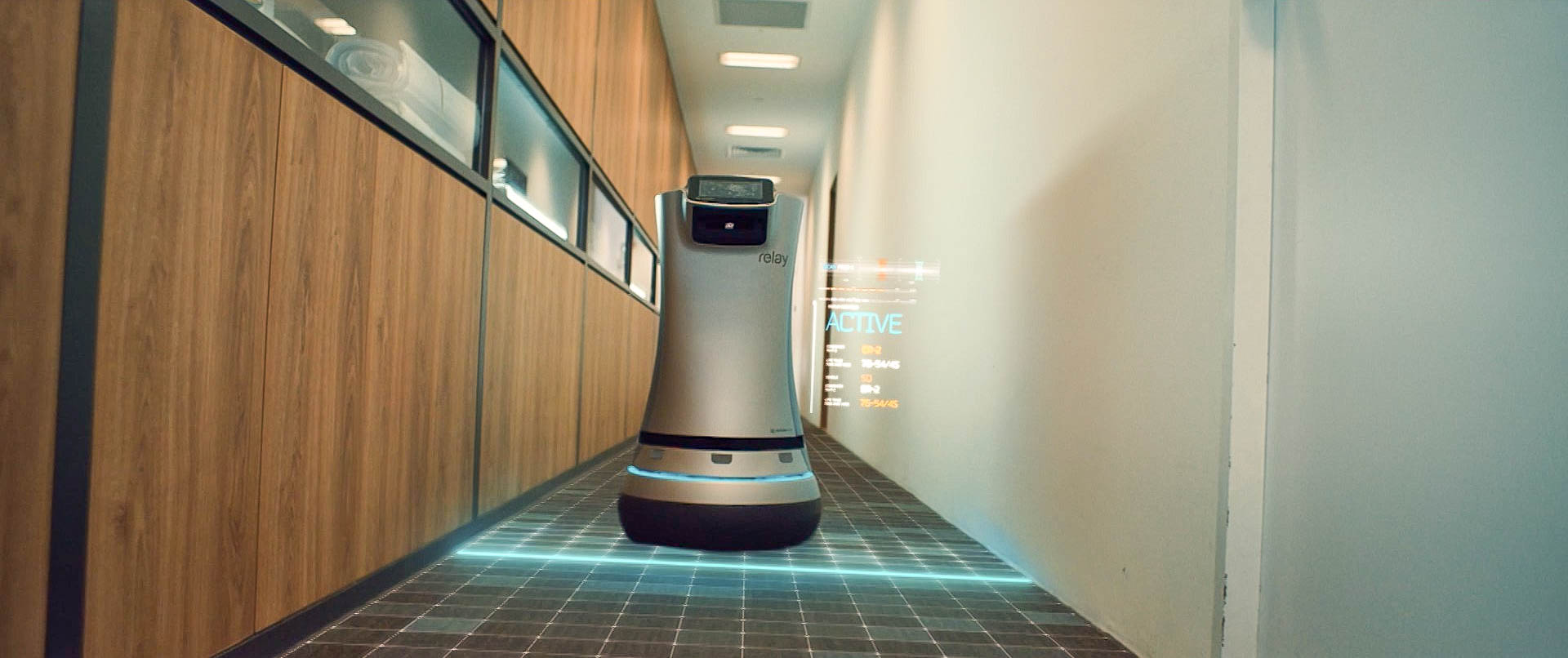
The everyday life at the upcoming Punggol Digital District (PDD) could resemble a scene out of a science fiction movie. A fleet of robots coming and going may be a part of the district’s bustling activity. Tasked with delivering food orders, these robots can pass through gantries, enter lifts and reach the doorsteps of the recipients’ offices, all on their own.
Making this smart last-mile delivery operation run seamlessly is PDD’s digital backbone: the Open Digital Platform (ODP). This is a proprietary technology co-developed by JTC and GovTech. Mr James Tan, director of JTC’s Smart District Division and GovTech’s Sensors and Internet of Things (SIOT), shares more on the unique features of this first-of-its-kind infrastructure.
Could you explain what the ODP does? What makes it special?
With the ODP, we are ushering in the next era of smartness. For the longest time, the conversation on smartness was stuck on the connecting of systems and sensors. No one was able to articulate anything beyond that. What makes the ODP a breakthrough is that it is an interoperability platform that not only connects disparate smart technologies, but also gets them to exchange their data and share controls. Much like an Android, it is an operating system capable of rendering services, such as unlocking a door or controlling the air-conditioning unit, all from a central C3 (command, control and communication) dashboard.
The smart last-mile delivery is one of the clear-cut use cases where the ODP is absolutely pivotal for the smooth running of operations. The different smart solutions, from autonomous mobile robots to a food delivery app and PDD’s facility management systems, need to be interoperable.
Another key component of the ODP is the digital twin. Think of it as the SimCity equivalent of PDD, but completely operationalised. This virtual 3D environment is fed live data mined from the sensors of the physical facility management systems. Security personnel, for example, can use the digital twin to manage PDD. In the past, they would have to go on foot patrol to spot anomalies such as unclosed doors or defective turnstiles. Now, the live data apprise them of what is happening on the ground. They are also alerted to any threat that presents itself.

A 3D model of PDD. The ODP’s digital twin technology serves as a 3D command and control estate management system.
“Ultimately, the aim of smart services is to improve the lives of people living and working in our estates. When we can offer real-time updates, from carpark occupancy to crowd levels at shopping malls, we increase our business partners’ convenience as they go about their days.”
How did the idea of having a complex infrastructure like the ODP take root?
It first sparked when former CEO of JTC Mr Ng Lang and current ACEO Mr David Tan did a tour of Germany’s Factories of the Future, and were impressed by their digital twins. They posited that the same technologies could be adapted for a commercial building or even an industrial estate. That set the wheels in motion. And when current CEO of JTC Mr Tan Boon Khai came onboard the project, he gave us the stimulus to expand our sphere and include external data such as water levels.
Why is that important? Well, flash floods are becoming a common occurrence in Singapore. As a mixed-use development with lifestyle amenities and nature-filled spaces, PDD will be shared amongst employees and members of the public. In the event of a flash flood, it is likely that the latter will seek shelter in our premises. Traffic will become congested, and crowds will form in certain areas. With the live data, we can issue advance warnings, and pre-emptively deploy security personnel rather than taking a reactionary approach.
As director, what is your role in orchestrating this project?
I see myself as an architect. I consider the goals as set by our management, and I find the right people who can fulfil the design of the solution architecture. As director, I have to ensure that each chosen component is indeed the best for the platform. Every decision will be met with some form of criticism or pushback, so I must be able to justify it. To do so, I must familiarise myself with business requirements as well as the strengths and limitations of the shortlisted components. In my free time, I read a lot of whitepapers. Many of the things I adopt for the ODP are trickled-down wisdom from the military. I’m a navy enthusiast, and I like to draw inspiration from naval applications as they have comprehensive systems that integrate weapons, sensors, and sonars. To me, running a smart estate is akin to running a warship.

A navy enthusiast, Mr Tan’s appreciation for naval applications extends across his work and personal life. In his free time, he enjoys assembling and painting model ships.
PDD will be one of the world’s first smart districts to adopt a technology like the ODP. When exploring this new frontier, how did your team put together the building blocks?
We touched base with the eventual end-users of the ODP — the facility management specialists — and listened to their needs. When we began, there were many things we didn’t know. For example, we thought the commercial air-conditioning systems would be somewhat similar to the ones we have at home. It was our facility managers who enlightened us that the solutions are in fact a lot more complex, with components such as chillers, air handling units, filters, fan coils and blowers. That was a eureka moment for us: we realised there was a need to map and present the relationships between all these components on the digital twin, so that we could perform predictive maintenance. Our data scientists got down to work and began pooling the data.
Even as we began testing our conceptual ideas, we continued to defer to our facility managers. For example, we knew we could tally the number of visitors entering and exiting a building through the counting modules on the turnstiles and CCTV analyses. We asked them: “How would footfall data help you to optimise lift scheduling and conserve energy?” We also have a user experience team that examines how the latest technologies can be integrated with the ODP. We checked in with our users to gather their feedback on these technologies and determine their usefulness.
Even though it was built for PDD, the ODP is versatile enough to be deployed just about anywhere. It is currently being trialled at The JTC Summit. What can you tell us about it?
Our headquarters was built in 2000. Many of the legacy systems were so old they didn’t even have connectors for interfacing. We had to work with product manufacturers to first build analogue connectors. Then, we developed our own hardware that can perform the analogue-to-digital translation. It took about a year for all the facility management systems to be retrofitted.
But the hard work has paid off — the result has been pretty exciting. Whoever has control over the C3 dashboard can interact with the virtual objects and gain control over the physical systems. Also, whenever there is user feedback, such as a malfunctioning air-conditioning unit, our facility managers can perform a historical playback and launch an investigation while taking an empirical, data-driven approach.

Being integrated with the ODP, Savioke's robot is able to autonomously deliver mail to occupants in The JTC Summit.
The integration has also allowed Savioke's robots to take over laborious processes such as mail delivery. The next phase of our trial involves rolling out the smart last-mile delivery, giving The JTC Summit occupants a taste of what it will be like to work in PDD, even before the latter officially launches. At the same time, we are deploying the ODP at the newly built Woodlands North Coast, and have begun constructing a digital twin of the mixed-use business and lifestyle precinct. We will continue to refine the ODP before its eventual rollout in 2024.
 A Singapore Government Agency Website
A Singapore Government Agency Website
